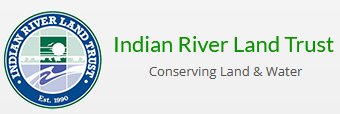Protecting Land
Research on IRLT Properties
The Indian River Lagoon has been plagued by an onslaught of water quality issues that has resulted in the devastating loss of thousands of acres of seagrass beds since 2011. This has triggered a cascade of ecological setbacks, from a decline in fish populations to the demise of hundreds of beloved manatees.

Dr. Jon Moore of Harbor Branch Oceanographic Institute has studied the population of diamondback terrapins (Malaclemys terrapin) at Bee Gum Point Preserve. These estuarine turtles appear to be utilizing the preserve as a significant nesting site in the central-southern Lagoon. The data collected allows the researchers to learn about the habits of this population in comparison to other populations of these increasingly rare reptiles along the East and Gulf coasts of the United States.
Dr. Jon Shenker of Harbor Branch Oceanographic Institute led a research team experimenting with mosquito impoundment management techniques to benefit important fish populations in the Lagoon. Students captured and tagged juvenile tarpon (Megalops atlanticus) and snook (Centropomus undecimalis) within several mosquito impoundments at IRLT preserves and tracked their movements through water exchange culverts which are temporarily opened during warmer months when they are typically closed. The study found that each impoundment could benefit from different management techniques to boost these iconic sportfish populations, including increased water exchange, flow-through pumping when culverts are closed, aeration, and habitat variety for different age classes of fish.
How can we make "sea vegetables" widely available as a sustainable, nutritious, and tasty way to feed people in developing nations? For Harbor Branch Oceanographic Institution researcher Dr. Megan Davis, that has been an important question to answer. Fortunately, due to the ongoing and impactful land protection efforts of IRLT, an abundance of "sea vegetables" occur naturally on several of the organization’s conservation properties. Also known as halophytes, these unique species grow in salty water and nutrient-poor soils, making them far less reliant on natural resources than plants grown in traditional forms of agriculture. Dr. Davis and her colleagues at FAU Harbor Branch have been collecting halophytes and their seeds from Land Trust properties and growing them in an aquaculture setting at their University research station in order to better understand efficient methods of growth and harvest. They hope this research can be translated into sustainable farming practices that can be employed in developing coastal communities around the world. IRLT is grateful to be able to protect and share such valuable resources that have the ability to profoundly impact the quality of life for countless people around the world.
